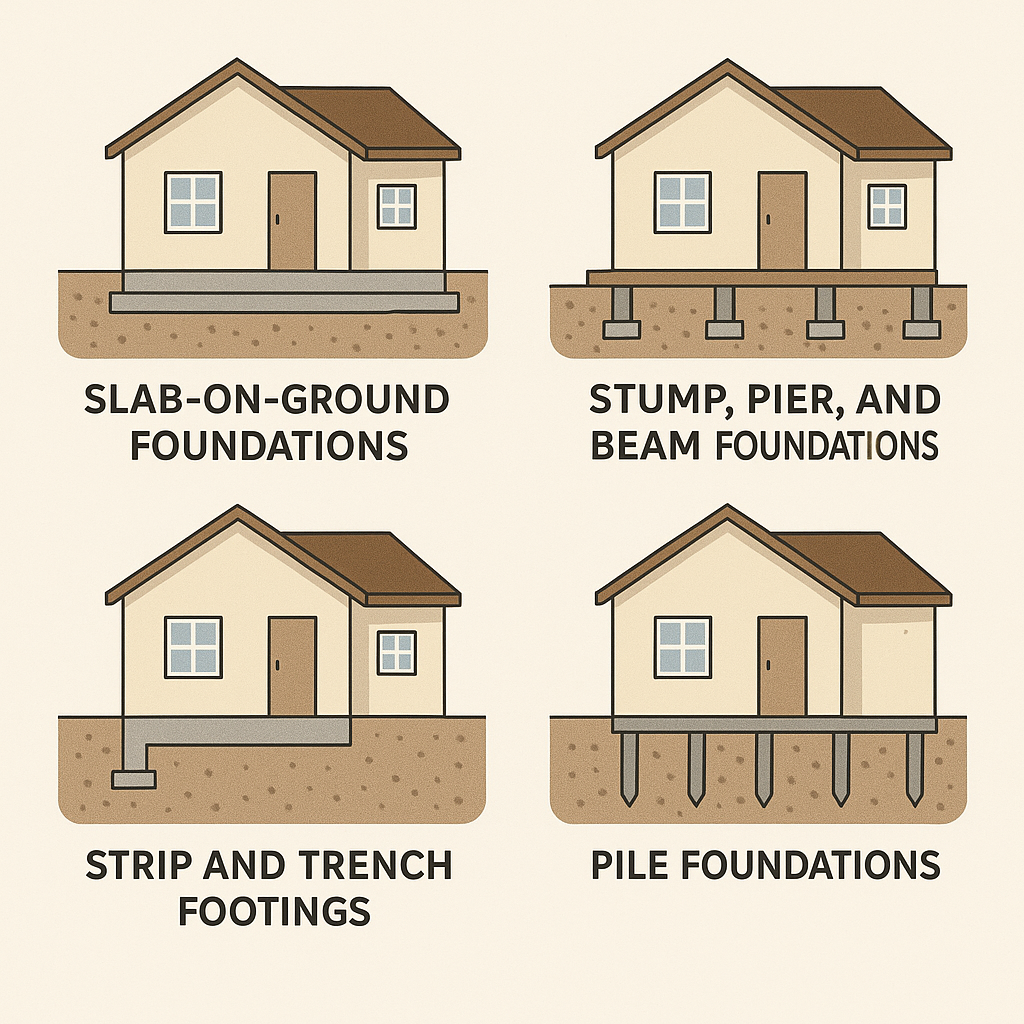Building a house is one of the biggest expenditures you will ever make; therefore, a strong, reliable foundation is the heart of every great home. Choosing a foundation for your home is about ensuring your home stands the test of time, no matter the soil type, weather conditions or building regulations. Let us look at the most common foundation types and how they impact your home.
Slab-on-Ground Foundations (Concrete Slabs)
If you have ever walked into a newly built home in Australia, chances are it was sitting on a concrete slab. This is a widely used foundation type, especially in areas with stable soil. A thick, reinforced concrete slab is poured directly onto the ground, creating a sturdy base for your home.
Types of Concrete Slabs in Australia:
- Raft Slabs – Designed with reinforced beams for extra stability, great for most soil types.
- Waffle Pod Slabs – An energy-efficient and cost-effective option, often used on reactive clay soils.
- Conventional Slabs – A basic, solid concrete base ideal for stable ground.
Why You’ll Love It:
✔ Quick and affordable to build
✔ Low maintenance and termite-resistant
✔ Helps regulate indoor temperatures
Things to Consider:
✖ Can crack over time if the soil shifts
✖ Harder to access plumbing and electrical systems once installed
✖ Not ideal for flood-prone areas

Stump, Pier, and Beam Foundations
Older Queenslander or a house on sloping land have a pier and beam foundation. This type raises the home above ground level using stumps, piers or beams, making it a smart choice for areas with shifting or unstable soil.
Why You’ll Love It:
✔ Works well on sloping or reactive soils
✔ Protects against flooding in high-rainfall areas
✔ Easy access to plumbing and electrical systems
Things to Consider:
✖ More expensive than a concrete slab
✖ Timber stumps may need replacing over time
✖ Can lead to creaky or uneven floors if not properly maintained
Strip and Trench Footings
Strip and trench footings would be the finest option if you intend a double-brick or brick veneer house. These foundations involve digging trenches and filling them with reinforced concrete to create a solid base for load-bearing walls.
Why You’ll Love It:
✔ Extra strong and durable; great for solid structures
✔ Works well on sloped land
Things to Consider:
✖ More excavation and materials mean higher costs
✖ More complex to build than a slab
Pile Foundations
Pile foundations can provide a strong basis for your house in a near-beach, river, or unstable soil environment. These involve driving deep concrete or steel columns into the ground, providing extra support.
Why You’ll Love It:
✔ Super strong and stable
✔ Great for coastal or flood-prone areas
Things to Consider:
✖ More expensive and requires specialist equipment
✖ Once installed, modifications can be tricky
Australian Building Codes and Considerations
No matter what type of foundation you choose, it must comply with the National Construction Code (NCC) and Australian Standard AS 2870 (Residential Slabs and Footings). Before construction starts, a geotechnical soil test helps determine which foundation type best suits your land.
Choosing the Right Foundation for Your Home
Your foundation isn’t just about holding up your home—it impacts everything from maintenance to energy efficiency. The best way to make the right choice? Work with an experienced builder or structural engineer who understands the conditions of your site.
At Aamico Homes, we know that a sturdy, durable, and safe house depends mostly on a well-made foundation. Whether you’re building new or renovating, our expert team is here to guide you every step of the way.
Get in touch with us today, and let’s build something great together!
References
- Australian Building Codes Board (ABCB). National Construction Code (NCC). Available at: https://www.abcb.gov.au/
- Standards Australia. AS 2870 – Residential Slabs and Footings. Available at: https://www.standards.org.au/
- Australian Geomechanics Society. Soil Classification for Residential Construction. Available at: https://australiangeomechanics.org/

